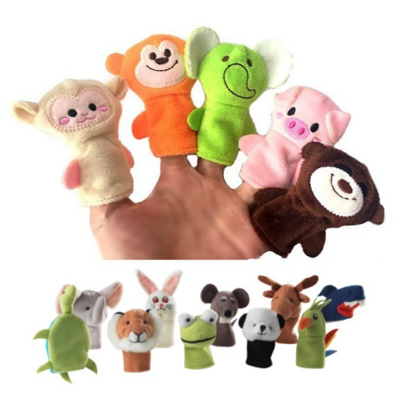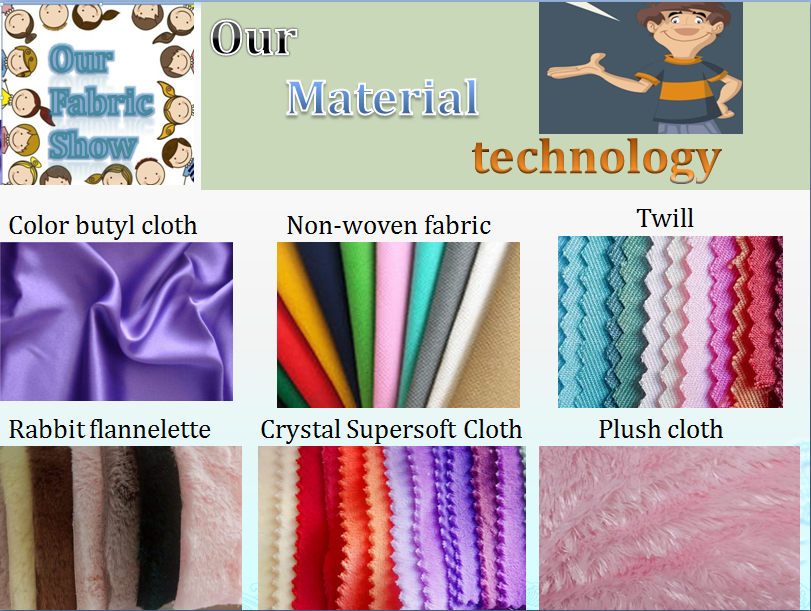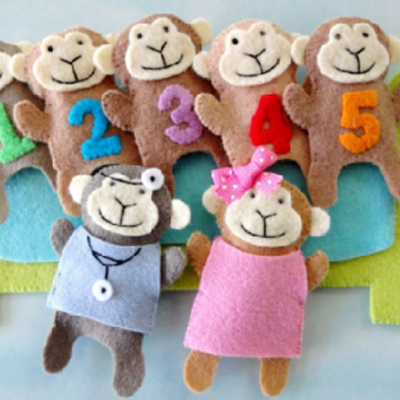Our company is a supplier of ELISA kits. The price is fair. The pre-sale, in-sale and after-sale services are at your service. Provide free test service, please call us!
Enzyme linked immunoassay (ELISA) of human gastrin releasing peptide precursor (ProGRP)
Kit instruction manual
This reagent is for research use only
Purpose: This kit is used to determine the content of gastrin releasing peptide precursor (ProGRP) in human serum, plasma and related liquid samples.
Experimental principle:
This kit uses the double antibody sandwich method to determine the level of human gastrin releasing peptide precursor (ProGRP) in the specimen. Microporous plates were coated with purified human gastrin releasing peptide precursor (ProGRP) antibody to prepare solid-phase antibodies, and gastrin releasing peptide precursor (ProGRP) was added to the monoclonal antibody-coated microwells in turn. HRP-labeled gastrin-releasing peptide precursor (ProGRP) antibody binds to form an antibody-antigen-enzyme-labeled antibody complex. After thorough washing, the substrate TMB is added for color development. TMB is converted into blue under the catalysis of HRP enzyme, and into the final yellow under the action of acid. The color depth is positively correlated with the gastrin releasing peptide precursor (ProGRP) in the sample. The absorbance (OD value) was measured with a microplate reader at a wavelength of 450 nm, and the concentration of human gastrin releasing peptide precursor (ProGRP) in the sample was calculated by a standard curve.
Sample processing and requirements:
1. Serum: room temperature blood coagulates naturally for 10-20 minutes, centrifuged for about 20 minutes (2000-3000 rpm). Collect the supernatant carefully and centrifuge again if a precipitate appears during storage.
2. Urine: collected in a sterile tube and centrifuged for about 20 minutes (2000-3000 rpm). Collect the supernatant carefully. If a precipitate forms during storage, centrifuge again. Pleural and ascites, cerebrospinal fluid reference implementation.
3. Plasma: EDTA or sodium citrate should be selected as the anticoagulant according to the requirements of the specimen. After mixing for 10-20 minutes, centrifuge for about 20 minutes (2000-3000 rpm). Collect the supernatant carefully. If a precipitate forms during storage, it should be centrifuged again.
4. Cell culture supernatant: When detecting secreted components, collect with a sterile tube. Centrifuge for about 20 minutes (2000-3000 rpm). Collect the supernatant carefully. When detecting the components inside the cells, dilute the cell suspension with PBS (PH7.2-7.4), and the cell concentration will reach about 1 million / ml. Through repeated freezing and thawing, the cells are destroyed and the intracellular components are released. Centrifuge for about 20 minutes (2000-3000 rpm). Collect the supernatant carefully. If a precipitate forms during storage, it should be centrifuged again.
5. Organize the specimen: after cutting the specimen, weigh it. Add a certain amount of PBS, PH7.4. Quickly freeze and save with liquid nitrogen for later use. After the specimen melts, it still maintains a temperature of 2-8 ° C. Add a certain amount of PBS (PH7.4) and homogenize the specimen with a manual or homogenizer. Centrifuge for about 20 minutes (2000-3000 rpm). Collect the supernatant carefully. After aliquoting, a portion is to be tested, and the rest is frozen for future use.
6. The specimen should be extracted as soon as possible after collection. The extraction should be carried out according to relevant literature. The experiment should be carried out as soon as possible after extraction. If the test cannot be performed immediately, the specimen can be stored at -20 ℃, but repeated freezing and thawing should be avoided.
7. The sample containing NaN3 cannot be detected because NaN3 inhibits the activity of horseradish peroxidase (HRP).
Precautions:
1. Crystals may be precipitated in the concentrated washing liquid, which can be heated and dissolved in a water bath during dilution, and the results will not be affected during washing.
2. The sealing film is limited to one-time use to avoid cross-contamination.
3. The sampler should be used at each step of sample addition, and the accuracy should be regularly checked to avoid test errors. It is best to control the sampling time within 5 minutes. If there are many specimens, it is recommended to use a volley gun to add samples.
4. The kit should be equilibrated at room temperature for 15-30 minutes before being taken out of the refrigerated environment. If the enzyme label coated plate is unopened, the strip should be stored in a sealed bag.
5. Please make a standard curve at the same time of each measurement, it is best to make a double hole. If the content of the test substance in the specimen is too high (the OD value of the sample is greater than the OD value of the first well of the standard well), please first dilute it with a certain multiple (n times) of the sample diluent and then determine it. When calculating, please multiply the total dilution Multiple (× n × 5).
6. Please keep the substrate away from light.
7. Strictly follow the instructions, and the test results must be determined by the microplate reader.
8. All samples, washing liquids and various wastes should be treated as infectious agents.
9. The components of different batches of this reagent shall not be mixed.
10. If there is any difference with the English manual, the English manual shall prevail.
Kit composition:
Kit composition
48 hole configuration
96-well configuration
save
Instructions
1 serving
1 serving
Sealing film
2 pieces (48)
2 pieces (96)
sealed bag
1
1
Enzyme coated plate
1 × 48
1 × 96
Store at 2-8 ℃
Standard product: 2700ng / L
0.5ml × 1 bottle
0.5ml × 1 bottle
Store at 2-8 ℃
Standard dilution
1.5ml × 1 bottle
1.5ml × 1 bottle
Store at 2-8 ℃
Enzyme reagent
3 ml × 1 bottle
6 ml × 1 bottle
Store at 2-8 ℃
Sample diluent
3 ml × 1 bottle
6 ml × 1 bottle
Store at 2-8 ℃
Developer A liquid
3 ml × 1 bottle
6 ml × 1 bottle
Store at 2-8 ℃
Developer B liquid
3 ml × 1 bottle
6 ml × 1 bottle
Store at 2-8 ℃
Stop solution
3ml × 1 bottle
6ml × 1 bottle
Store at 2-8 ℃
Concentrated washing liquid
(20ml × 20 times) × 1 bottle
(20ml × 30 times) × 1 bottle
Store at 2-8 ℃
Steps
1. Add sample: set up blank wells separately (the blank control wells do not add samples and enzyme-labeled reagents, the rest of the steps are the same) and the sample wells to be tested. Add 40μl of sample diluent to the test sample well of the enzyme-coated plate, and then add 10μl of the sample to be tested (the final dilution of the sample is 5 times). Add the sample and add the sample to the bottom of the well of the microplate, try not to touch the wall of the well, shake gently to mix.
2. Dilution and loading of standard products: set 10 standard wells on the enzyme-coated plate, add 100 μl of the standard products in the first and second wells, and then add the standard products in the first and second wells 50μl of diluent, mix well; then take 100μl from the first well and the second well and add them to the third and fourth wells respectively, and then add 50μl of standard diluent to the third and fourth wells respectively, mix well; Then take 50μl each in the third and fourth wells and discard it, then add 50μl each to the fifth and sixth wells, and then add 50ul of the standard dilution solution to the fifth and sixth wells respectively, and mix well; After mixing, take 50μl from the fifth and sixth wells and add them to the seventh and eighth wells respectively. Then add 50μl of the standard dilution solution to the seventh and eighth wells respectively. Take 50μl from the eight wells and add them to the ninth and tenth wells. Then add 50μl of the standard dilution solution to the ninth and tenth wells. After mixing, take 50μl from the ninth and tenth wells and discard. (After dilution, the volume of each well is 50μl, and the concentration is 1800ng / L, 1200ng / L, 600ng / L, 300ng / L, 150ng / L)
3. Incubation: Seal the plate with a sealing plate and incubate at 37 ° C for 30 minutes.
4. Mixing solution: Dilute 30 times (20 times of 48T) concentrated washing liquid with distilled water 30 times (20 times of 48T) and then use.
5. Washing: Carefully peel off the sealing film, discard the liquid, spin dry, fill each well with the washing liquid, let it stand for 30 seconds and then discard, repeat 5 times and pat dry.
6. Incubation: The operation is the same as 3.
7. Washing: The operation is the same as 5.
8. Color development: Add 50μl of developer A to each well, and then add 50μl of developer B, mix gently, and develop at 37 ° C in the dark for 15 minutes.
9. Add enzyme: add 50μl of enzyme label reagent to each well, except blank well.
10. Termination: Add 50μl of stop solution to each well to stop the reaction (at this time the blue will turn to yellow).
11. Determination: Measure the absorbance (OD value) of each well in sequence with the blank air conditioner at zero and 450 nm wavelength. The measurement should be carried out within 15 minutes after adding the stop solution.
Storage conditions and validity period:
1. Store the kit: 2-8 ℃.
2. Validity: 6 months
Kit performance:
1. The correlation coefficient R between the linear regression of the sample and the expected concentration is above 0.95.
2. The batch and approval shall be less than 9% and 11% respectively
examination range:
100ng / L -2000ng / L
Calculation:
Taking the concentration of the standard as the abscissa and the OD value as the ordinate, draw a standard curve on the coordinate paper, and find the corresponding concentration from the standard curve according to the OD value of the sample; then multiply by the dilution factor; Calculate the linear regression equation of the standard curve with the OD value, substitute the OD value of the sample into the equation, calculate the sample concentration, and multiply it by the dilution factor to obtain the actual concentration of the sample.
According to its volume, props are divided into big props and small props. The former includes tables and chairs, sofas, cabinets and screens, while the latter includes telephones, bottles, cups, food and gadgets. According to the use nature of props, it can also be divided into decorative props (such as curtains, screens, chandeliers and various decorations), hand props (such as bags, suitcases, pistols, canes, etc.), consumption props (such as food, cigarettes, bowls and plates that need to be broken in public on the stage), practical props (such as tables, chairs and other props that need to bear weight), etc. The design style of stage props is consistent with the style of setting, lighting and clothing. Therefore, in some modern stage designs with large deformation or abstraction, the form of props and props is also consistent with it. In some abstract scenes, the size of the props of the entity is even replaced by the actors'virtual actions. Plush toys can also be used as dance props. We can customize the finished products according to The Dance Props you imagine. We have professional designers, you can design according to your requirements, you only need to provide pictures (physical or graphic) can be customized. All production products can be labeled with cloth, embroidered with trademarks, so that each product has company information, has its own brand, enhance the visibility of the enterprise. Our products are exported to many countries, such as Japan, Europe and the United States. All raw materials are environmentally friendly.

Cloth introduction:

1.Yarn-dyed cloth: the structure of the silk thread is well shaped. The appearance is similar to 5 pieces of satin and 8 pieces of satin. The density is better than 5 pieces of satin and 8 pieces of satin. Specifications are generally 75 * 100D, 75 * 150D and so on. The raw material of tinted cloth: it can be cotton, blended or polyester, or pure chemical fiber, which is formed by the different organization of the fabric. The product that lubricious ding bu makes popularity is wide, glossiness drape feels good, feel soft. Elastic colored butyl cloth "adopts polyester FDY dayou light 50D*DTY75D+ spandex 40D as the raw material, and USES satin weave weave in the jet loom. Because the warp thread adopts dayou light silk, the cloth surface has charm, and occupies a place in the recent fabric market with the advantages of lightness, smoothness, elasticity, comfort and luster. Polyester low-elastic silk is the raw material, the fabric structure USES satin plain grain to change the texture, woven on the air jet loom, grey cloth and then after desizing, pre-shrinking, softness and other treatment, the fabric permeability is particularly good, and feel soft and smooth, fabric width is 150cm. Design and color d set comfort, modern sense, artistic sense in one of the new fabrics
2. Non-woven fabrics: They are directional or random fibers. They are a new generation of environmental protection materials. They are moisture-proof, breathable, flexible, light, non-combustion-supporting, easy to decompose, non-toxic, non-irritating and colorful.
3. Twill: various twill fabrics are used to make the surface of the fabric show oblique lines formed by warp or weft floating lines. Twill is a medium thickness denim, there are two kinds of thick, fine (20-40 pieces), are using 2/1 left twill organization, texture than plain cloth slightly thick soft, front lines clear.
4, rabbit wool: rabbit wool fiber scales are relatively smooth. Soft sex, hygroscopicity, do not have a ball, also be rabbit flannelette material underwear rises in recent years one of main reasons. Rabbit hair belongs to amino acid protein fiber, which is similar to the composition and structure of human skin, has a good skin-friendly feeling, and has the function of maintaining animal life.
5, crystal super soft wool surface to be more delicate, feel better. High density between fibers, strong three-dimensional sense of hair, beautiful appearance, compared with the original super soft, glossiness is higher, feel more soft and thick, fine texture, environmental protection and so on.
6, wool fabrics have a velveteen, velvet, velvet, cluster flannelette, polyester silk fabrics flannelette flannelette, knitted fabrics, cotton fabrics flannelette velvet, velvet fabrics, warp knitted fabrics flannelette (new varieties, with 50 d polyester yarn and polyester FDY such DTY75D / 36 f/strong mesh as raw material, using the knitting chain structure, fabrics successively after scouring desizing, finalize the design, dyeing, softening, stenter stereotypes, such as deep processing), hole ring flannelette, super soft plush cloth (the latest varieties), short plush cloth (the latest varieties)

Our company is equipped with advanced production machines and complete inspection machines to improve production efficiency and quality. Our aim is to provide the best service, the fastest delivery time, high quality products and low price quotation to all customers.
The Dance Props
The Dance Props,Dance Flash Props,Festival Dancing Props,Dance Party Props
SHEN ZHEN HAO XIAN LONG TECHNOLGY.CO.,LTD , https://www.haoxianlongtoys.com